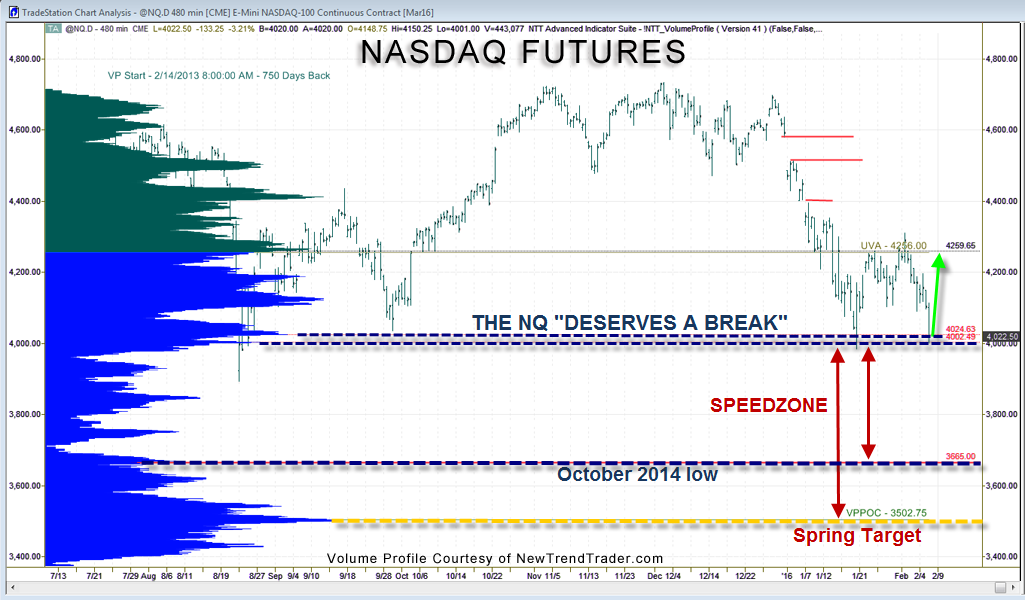The Nasdaq 100 is an index comprised of the 100 largest Nasdaq stocks by market cap. This cap-weighted index is a well-watched benchmark because it is the Nasdaq’s version of the S&P 500.
I recently discussed the technical criteria for calling a bear market in the S&P 500, which differs from the Nasdaq 100 due to differences in volatility. If the S&P 500 (SPY) closes below the 13-ema on a monthly chart, with a broken multi-year uptrend line, it suggests the start of a bear market. For “confirmation,” the 13-ema needs to cross down below the broken trend line.
For the tracking stock of the Nasdaq 100 (the QQQ) the moving average to use is the 21 ema. The confirmatory cross-over has not happened yet in the SPY, but it is happening as I write this in the QQQ, courtesy of last week’s 5.7% decline. So, the bear has struck the QQQ’s.
To be sure, a decent rally is overdue and with China on vacation this week, this is an excellent opportunity for the bulls. If we get a Valentine from the market gods, I would be looking for an initial target around 4250 in the Nasdaq futures. Remember, bona fide bear markets generate the largest rallies, so don’t fade them until they show clear signs of exhaustion and multiple oscillator divergences.
Meanwhile, the 4000 level in the NQ futures is an important zone of support (the twin blue dotted lines on the accompanying chart.) If the NQ can’t rally from here, however, then the next downside target is the October 2014 low at 3665 with intermediate stops at the weekly pivots. (If we were to head straight down this might feel like a mini-crash.)
Ultimately, I expect the 3665 level to get undercut a bit because the 750-day Volume Profile Point of Control is at 3502. That’s our Spring target. In the meantime, let’s see if the bulls can show some mettle.
www.daytradingpsychology.com (Coaching for private traders.)
www.trader-analytics.com (Peak performance consulting to RIAs, hedge funds and banks.)





